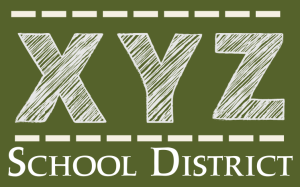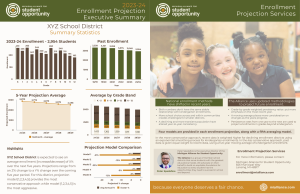The Alliance (formerly Middle Cities Education Association) Enrollment Projection Program employs current methodologies for projecting student enrollment used by the National Center for Education Statistics (NCES).
We have provided enrollment projection services to school districts across Michigan and throughout the U.S. for 40 years. Our reports are approved by Michigan Department of Treasury for School Bond Loan Fund applications.
Prices
In State: $500 (within two weeks)
Outside of Michigan: $1,000
Expedited Service: $750 (within two business days)
Executive Summary included with all reports
If you need to tweak any of the data once your report is completed, there is a $150 charge to rerun the report and summary.
Process
Complete a 2025-26 request form (after fall count day, October 1, 2025) and return it to enrollment@mialliance.com. Reports are completed in the order they are received, usually within two weeks.
Upon completion, you’ll receive a PDF of your report, invoice, interpretation guide and free Executive Summary.
Questions?
The Michigan Alliance for Student Opportunity (formerly the Middle Cities Education Association) is a group of member school districts that serve students with the greatest educational needs. We advocate on their behalf to build an equitable foundation for education so every student has the opportunities they need to succeed in school and beyond.
CONTACT INFO
Patricia Alderman
Member Services Coordinator
120 N. Washington Square, Suite 910
Lansing, MI 48933
enrollment@mialliance.com
517-492-1380


